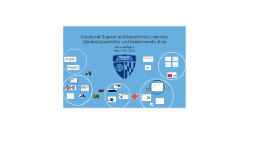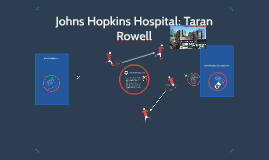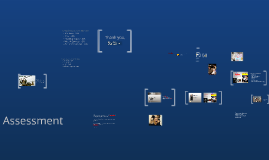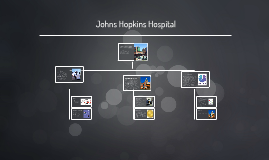Johns Hopkins Presentation
Transcript: Student Life Curriculum References Astin, A.W. (1999). Student involvement: A developmental theory for higher education. Journal of College Student Development, 40(5), 518-529. Chickering, A.W., & Gamson, Z.F. (1987). Seven principles for good practice in undergraduate education. AAHE Bulletin, 3-7. Child Trends. (2013, October 30). What can schools do to build resilience in their students? France, M.K. & Finney, S.J. (2010). Conceptualization and utility of university mattering: A construct validity study. Measurement and Evaluation in Counseling and Development, 43(1), 48-65. Gallup-Purdue Index 2015 Report, Great jobs, great lives: The relationship between student debt, experiences, and perceptions of college worth. Gallup-Purdue Index 2014, Great jobs, great lives: A study of more than 30,000 college graduates across the U.S. Jain, R. (2016, January 10). Teaching students the abc’s of resilience. Edutopia. Landro, L. (2016, February 15). Why resilience is good for your health and career. The Wall Street Journal. Penn, J. & Major, L. (2016, March 14). Do our students believe they matter us? Experiences assessing mattering to inspire change at two research institutions. NASPA Annual Meeting. Rumann, C.B. & Bondi, S. (2015) Engaging student veterans inside and outside the classroom. In S.J. Quaye & S.R. Harper (Eds) Student engagement in higher education: Theoretical perspectives and practical approaches for diverse populations. Routledge: New York, pp. 323-337. Common components: -individual behaviors -attitudes -cognitive competencies -school and community support Personality type factors: Openness to experiences, conscientiousness, extravertness, agreeableness, and emotional stability 7. Respects Diverse Talents and Ways of Learning Areas of Well-being (France & Finney, 2010; Penn & Major, 2016) • Two categories: interpersonal and academic Power to shape an environment that is favorable to good practice in higher education •Shared purposes •Support from administrators and faculty • Adequate funding • Policies and procedures • Assessment Resiliency (Astin, 1999) 2.Develops Reciprocity and Cooperation Among Students -Team effort learning -Collaborative and social -Increases involvement in learning -Enhances critical thinking Student Life Curriculum Various models for inspiration Make connections Mattering advocate Importance of mattering Encouragement to participate Something for everyone 2. Develops Reciprocity and Cooperation Among Students Purpose Well-Being: Liking what you do each day Social Well-Being: Having strong and supportive relationships Community Well-Being: Engagement with the areas where you live Financial Well-Being: Managing economic life Physical Well-Being: Good health and energy (Rumann & Bondi, 2015) Guiding question: “every adversity one faces triggers beliefs about that situation, which in turn causes a reaction or consequence” Promotes intentional faculty interaction 1. Encourages Contact Between Students and Faculty • Theory of validation Mattering “Do specific undergraduate experiences matter more to alumni’s overall impression of their alma mater, and which most consistently relate to positive outcomes such as high well-being and workplace engagement after graduation?” (Gallup 2015) 7 principles for good practice in undergraduate education Mentoring programs Thank You Questions/Comments 6. Communicates High Expectations -Important for everyone-for the poorly prepared, for those unwilling to exert themselves, and for the bright and well-motivated Support and influence can look like this • Setting policies that are consistent with good practice • Institutional performance expectations • Minimize bureaucratic regulations • Allocating adequate funds We are problem solvers, but are we good problem solvers? 1 . Encourages Contact Between Students and Faculty -Most important factor in student motivation and involvement -Faculty concern helps students get through rough times and keep on working -Enhances students’ intellectual commitment and encourages thought on values and future plans Quality versus quantity Sara Gallegos March 25, 2016 Who are we? 3 areas of mattering: Awareness Importance Reliance Emotional Support and Experiential Learning: Student Leadership and Involvement's Role Title **Note about staff mattering 3. Encourages Active Learning Emotional Support and Experiential Learning 5. Emphasizes Time on Task Small gatherings (Child Trends, 2013; Jain, 2016; Landro, 2016) Who are we? 3. Encourages Active Learning -Students must talk about what they are learning, write about it, relate it to past experiences and apply it to their daily lives -Make learning part of themselves “Resilience is often defined as the capacity to adjust to change, disruption or difficulty and move on from negative or traumatic experiences in a positive way.” Provide trainings What would this accomplish? 7. Respects Diverse Talents and Ways of Learning -Celebrating different talents and learning

















